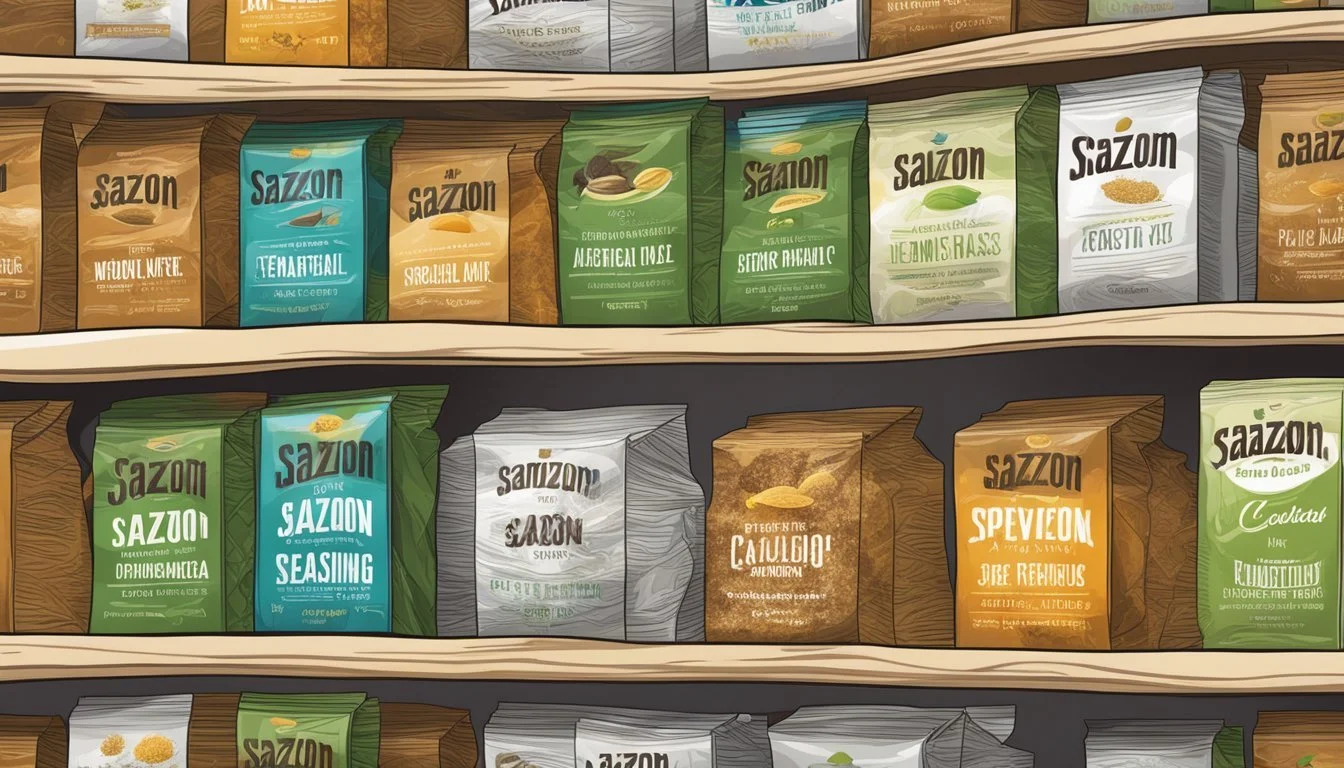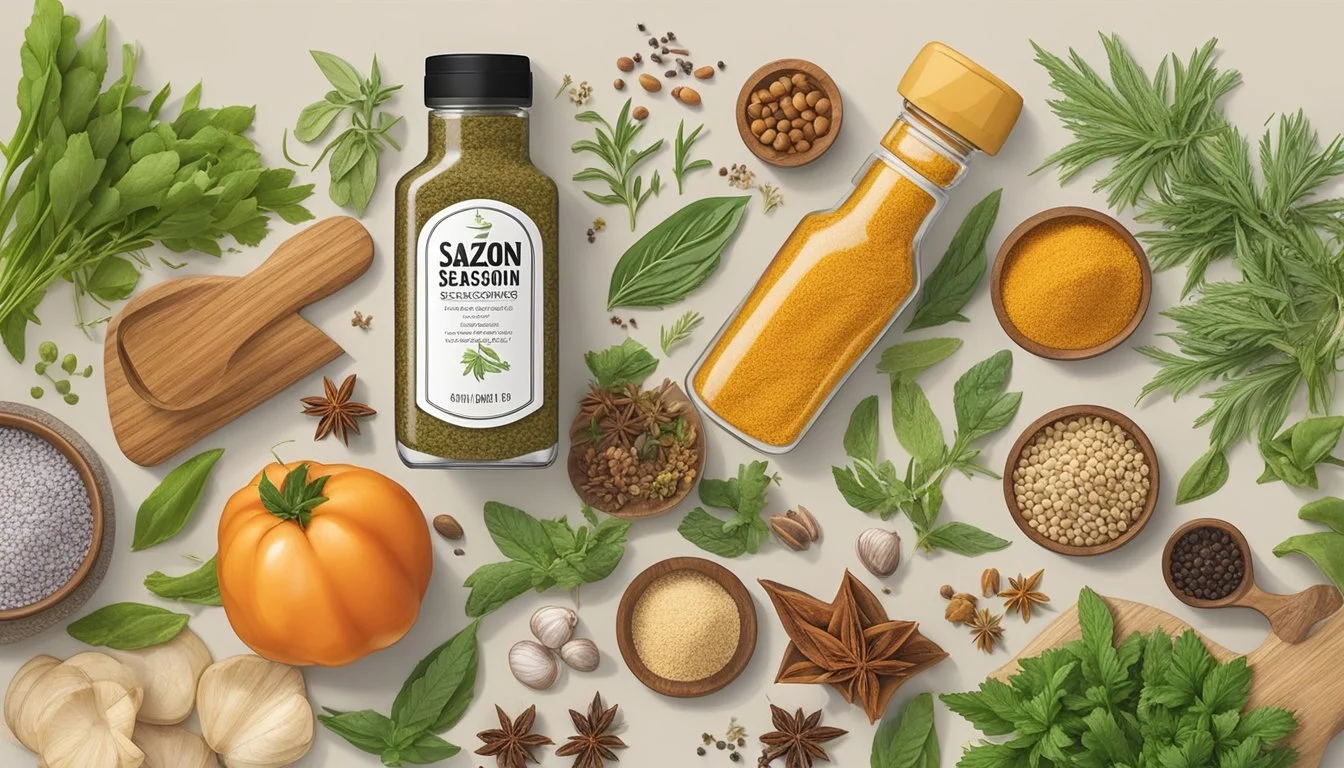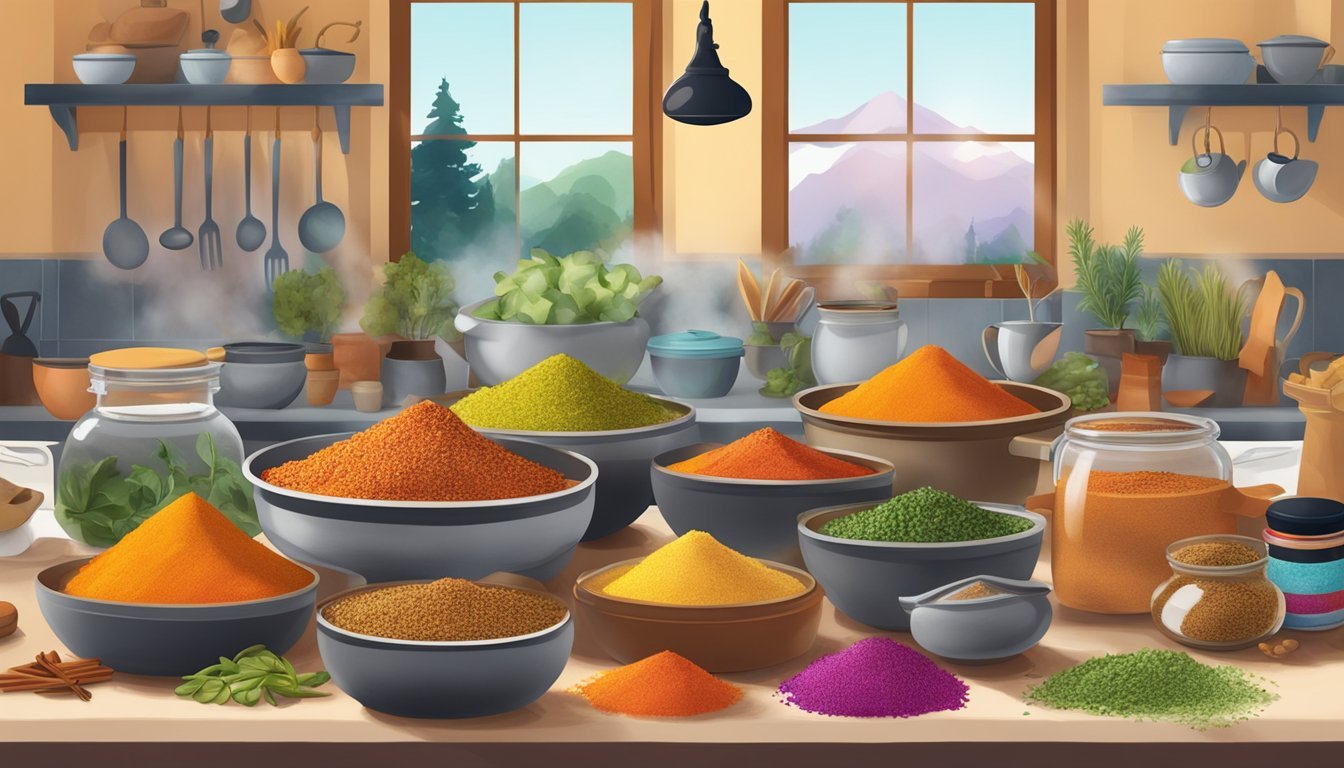Does Sazon Seasoning Expire? Essential Shelf Life Facts
Does Sazon seasoning expire? That's a question that often crosses the minds of cooks who rely on this versatile Latin spice blend. Sazon seasoning, when stored in an airtight container in a cool, dark place, can maintain its flavor for about 3-6 months. This timeframe ensures that the mix retains its vibrant taste and color, which are essential for enhancing various dishes.
The blend, typically made from ingredients such as coriander, cumin, annatto, and oregano, is a staple in many dishes across Puerto Rican, Dominican, and Mexican cuisines. Though the seasoning itself doesn’t spoil in the way fresh produce or protein might, its potency diminishes over time. The spices gradually lose their flavors, making it crucial to use the seasoning within the recommended period.
For those constantly cooking with Sazon, refreshing your batch every few months is a good practice. This ensures that every meal, whether it’s a hearty stew, a robust rice dish, or a perfectly seasoned protein, benefits from the full spectrum of flavors that Sazon promises. Keeping an eye on the seasoning's storage conditions and usage timeline can make a significant difference in the quality of your culinary creations.
Understanding Sazon Seasoning
Sazon seasoning is a vibrant and essential blend of spices central to many Latin American and Caribbean cuisines. Its rich history, unique composition, and versatile culinary uses make it a staple in many kitchens.
History and Cultural Significance
Sazon seasoning has deep roots in Puerto Rican, Dominican, and Mexican cooking. Originating in Puerto Rico, it initially flavored stewed beans but quickly expanded to other dishes such as stews and rice-based recipes. The seasoning reflects a melding of influences, with ingredients sourced from Europe, the Americas, and Asia. This diverse background highlights the cultural exchanges that shape Latin and Caribbean culinary traditions. Sazon remains a symbol of this heritage, enriching countless traditional and modern dishes.
Composition of Sazon Seasoning
The composition of Sazon seasoning can vary, but it typically features a mix of garlic powder, onion powder, ground cumin, coriander, annatto (achiote), oregano, and salt. Annatto gives Sazon its distinctive red-orange hue, which adds a visual appeal to dishes. Additional ingredients such as cilantro and pepper might be included for a unique touch. This combination of spices creates a well-rounded flavor profile that enhances the taste of numerous dishes without overpowering them. While commercially available, many prefer homemade Sazon for its freshness and customizable flavor.
Culinary Uses
Sazon seasoning is incredibly versatile, enhancing a wide range of dishes. It is commonly used in stews, beans, chicken, fish, and beef preparations. In Puerto Rican cuisine, it’s a key ingredient in Arroz con Pollo and yellow rice dishes. Mexican cooking often sees it in tacos and soups, while it also flavors empanadas and other Latin American favorites. The seasoning’s adaptability means it can be used in various recipes to add depth and complexity, making it a go-to for both everyday and festive meals.
Users can easily incorporate it into their cooking to enhance traditional Latin flavors and experiment with new culinary creations.
Shelf Life and Expiration
Sazon seasoning, like most spices and seasonings, does come with a shelf life. Several factors influence how long it can stay fresh and effective.
Factors Affecting Shelf Life
Storage Conditions: Proper storage is critical for maximizing the shelf life of Sazon seasoning. It should be kept in a cool, dry place. Exposure to light, heat, and moisture can rapidly degrade its quality. An airtight container is recommended to keep the aroma and flavor potency intact.
Packaging: The original packaging of Sazon seasoning often provides a good barrier against air and moisture. Once opened, it's advisable to transfer it to an airtight container to maintain freshness.
Natural Ingredients: The composition of Sazon, which often includes various ground spices and herbs, influences its shelf life. Generally, ground spices can last up to two years, whereas whole spices might last a bit longer.
Identifying Signs of Expiry
Color: One of the first signs that Sazon seasoning is losing its potency is a noticeable change in color. Faded or dull colors can indicate that the seasoning is no longer fresh.
Aroma: Fresh Sazon seasoning has a robust fragrance. If the aroma is weak or has completely dissipated, it's a sign that the seasoning is past its prime.
Flavor Potency: The strength of the flavor can diminish over time. If the Sazon seasoning no longer imparts a strong taste, it might be time to replace it.
Mold: In rare cases where the seasoning has been exposed to moisture, mold can develop. If mold is present, the seasoning should be discarded immediately for safety.
Regularly checking these signs can help ensure you are using Sazon seasoning at its best quality, providing flavorful and safe meals.
Storing Sazon Seasoning
Proper storage of Sazon seasoning ensures its maximum freshness and potency. Key considerations include protection from moisture, air, and light.
Best Practices for Storage
Store Sazon seasoning in an airtight container to keep moisture and air at bay. A glass jar with a tight-fitting lid is a good option. Avoid plastic containers if possible, as they can allow air to seep in over time.
Keep the container in a cool, dry place, such as a pantry or a drawer. Ensure it is away from direct sunlight and sources of heat, like the stove, which can degrade the spices.
Using whole spices like coriander seeds and peppercorns and grinding them as needed can also help maintain freshness. Dried herbs incorporated in the blend should be properly dried to avoid introducing moisture.
Extending Shelf Life
To extend the shelf life of Sazon seasoning, store it in an area with consistent temperature and humidity. Avoid areas prone to temperature fluctuations, like near windows or kitchen appliances that emit heat.
Repackage large quantities of Sazon into smaller, tightly sealed containers to minimize exposure to air each time you use it. This practice helps retain the seasoning’s aromatic compounds and prevents degradation.
If available, silica gel packs can be added to the container as an extra measure against moisture. Regularly check the seasoning for any changes in color or aroma, which can indicate loss of potency.
Have a dedicated spoon for scooping to avoid contaminating the seasoning with moisture or food particles from other ingredients.
Health Considerations and Alternatives
Sazon seasoning, while flavorful and popular, often contains additives and sodium. It’s important to weigh health considerations and explore potential homemade alternatives.
Understanding Additives
Commercial Sazon seasoning can include monosodium glutamate (MSG), tricalcium phosphate, and artificial colors.
MSG is commonly used to enhance flavor but can cause adverse reactions in some individuals, such as headaches or nausea. Reading labels is essential to avoid unwanted additives.
Artificial colors and tricalcium phosphate may also be present and are best avoided by those looking for natural ingredients. Reducing sodium intake is another health priority. Many commercial blends are high in sodium, which can contribute to hypertension and cardiovascular diseases.
Homemade Sazon Alternatives
Creating a Homemade Sazon Seasoning blend is a simple and healthier alternative.
A basic DIY blend can include ground annatto seeds, cumin, coriander, dried oregano, garlic powder, and salt. This version omits artificial colors and excess sodium.
For those unable to source annatto, paprika or turmeric can be effective substitutes. This approach ensures more control over ingredient quality and helps avoid additives like MSG.
Additionally, homemade blends allow customization to suit dietary restrictions or flavor preferences—ensuring a fresher, more wholesome seasoning option. Avoiding pre-packaged alternatives like Adobo seasoning, which can also contain high sodium and additives, is another way to ensure a healthier diet.
Culinary Creativity with Sazon
Sazón seasoning offers a perfect blend of spices to enhance the flavor and versatility of various dishes. Its combination of ground annatto, cumin, coriander, and other spices makes it a staple in many kitchens for both savory and sweet applications.
Versatile Uses in Cooking
Sazón can transform everyday meals into flavorful feasts. It's often used to season proteins like pulled pork, chicken, and fish. Vegetables such as potatoes and bell peppers also benefit from its savory taste.
For rice dishes, adding sazón creates vibrant flavors seen in traditional Latin American dishes. It can elevate enchiladas, infusing them with a rich and aromatic taste. For something unique, try sprinkling sazón on French fries or using it as a dry rub for grilled meats.
Sazón is also a key ingredient in sofrito, a fundamental base in many Latin cuisines. This blend can be added to soups, stews, and even tomato-based dishes to boost flavor.
Crafting Unique Blends
Creating your own sazón blend allows for customization suited to personal taste preferences. Start with ground annatto for color, adding ground cumin and ground coriander for depth. Ground turmeric and paprika can provide additional warmth and complexity.
Adjusting the amount of cayenne pepper can control the heat level, making the blend suitable for various dishes ranging from mild to spicy. Saffron can also be included for a more delicate and unique flavor profile.
Experimenting with different spice ratios can lead to discovering the perfect blend for your culinary needs. This flexibility makes it a valuable tool in any kitchen, enhancing the taste of everything from simple side dishes to elaborate main courses.







